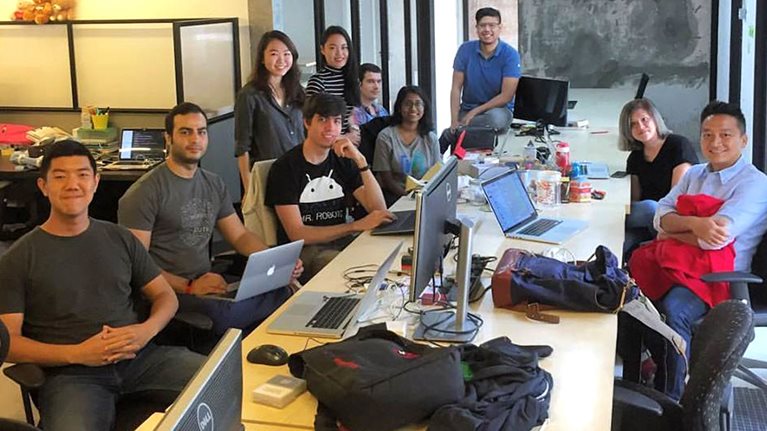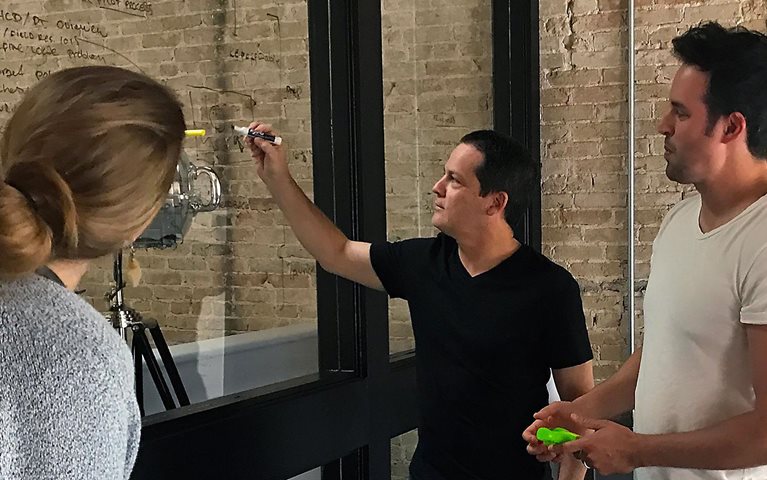In just 4 years since its founding, VLT Labs, a digital business builder and product development studio based in Kuala Lumpur, has made quite an impression in the region. Having already helped clients build 53 new products and businesses, their work is reshaping the way people live—how they hire help, buy homes, cook dinner, manage their money, follow the news, schedule haircuts, and even talk to their doctors.
As of today, the Malaysian team of digital and design experts is joining our Digital Labs team in Kuala Lumpur. This addition bumps up our number of engineers, designers, user-experience (UX) and digital experts to meet the booming demand for digital work across Southeast Asia—notably in Indonesia, Malaysia, Singapore, and Thailand.

We spoke with legacy VLT Labs’ two cofounders, Izwan Ismail, an industrial, medical, software, and product designer, and Andrew Tan, an electrical engineer and innovation strategist, about what this acquihire (i.e., the acquisition of talent and assets) means to both their company—and McKinsey. In addition to leading client service at VLT Labs, the two are actively involved in helping to build the digital design industry within Malaysia today.
What talent is VLT Labs bringing to McKinsey?
We invest a lot in user experience training since most designers in the region, and especially in Malaysia, come from traditional visual graphic-design backgrounds. As a small group, we’re able to be nimble and flexible—conceptualizing, designing, and building web and mobile-based applications, products, and new ventures— from the ground up. Our areas of focus include user experience and user-interface design, consumer research, design strategy, chatbot computing, mobile development, and full-stack engineering.
We’ve built products—ranging in size and scale—for both start-ups and big corporations. We’ve been actively involved in the start-up and entrepreneurship community here in Kuala Lumpur and have been able to grow quite a network of designers and tech folks within the region.
How will this acquihire change the way you serve clients?
As part of the McKinsey network, we’re excited to have greater reach and the opportunity to serve a wider range of clients and much bigger brands. We’ll be able to work with McKinsey’s industry teams and strategy and analytics experts to design new products and/or experiences.
We’ve been really focused on building and launching [products/services], but with this acquihire and McKinsey’s experience in organizational design, growth strategies, and capability building, we can help our clients get to that next step—and sustain their transformations for the long-term.
What types of projects do you work on?
It really runs the gamut. We’re pretty industry agnostic, working across telecoms, insurance, banking, and fashion. Earlier this year, we partnered with McKinsey in delivering a banking app for a Southeast Asian bank that was threatened by fast-growing digital competitors. Recently, we helped launch a chatbot machine-learning app for an Australian fashion brand, and now we’re developing the technology for an urban farming company to help ensure optimal pH balance for fish in aquariums.
Across all our projects, we partner with clients to figure out how best to transform their ideas into something tangible and executable. Once it’s out there in the market, we do a lot of user testing to see how people respond, and then we iterate. Typically, our engagements are no longer than 2 to 4 months since our goal as a business builder is to be able to hand over a fully functioning team and operation to the client so they can launch quickly.
How are you tapping into the growth in design that’s happening in Asia?
UX is playing an integral role in Southeast Asia—across start-ups, big corporations, and even education. The challenge, however, is finding good talent. A lot of companies are talking about UX and trying to embrace it, and many universities are exploring ways to develop these skills. Since we started, we’ve been bringing in designers and training them with knowledge on how to research user behavior and design for the best type of experience. It’s so important for a UX designer to be able to understand the users for which they’re designing and how to transfer conceptual ideas into executable ones that will delight.
How will VLT Labs’ culture mesh with McKinsey’s?
In many ways, we’re very similar. At VLT Labs, we’ve fostered a culture of deep respect for one another, valuing each other’s perspectives since we too are a global team. Like McKinsey, we share that same hunger for knowledge and passion for doing excellent work. Despite our obvious differences in size, we both follow very specific work processes in how we approach client problems and reach solutions. It’s a very collaborative and iterative style that is focused on transferring all capabilities over to the client to be able to run on their own once we are gone.
What will be new and exciting for us is tapping into McKinsey’s much vaster base of knowledge and expertise. Coming from a small team to an organization of thousands and thousands will mean we’ll now be able to reach out to anyone in the world for any specific set of knowledge in a field. That’s pretty cool.
